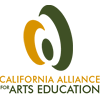Evaluating Progress
It is essential to establish a method of program evaluation that will continue for the duration of your 3-5 year plan. Ideally, the evaluation plan is developed in conjunction with the annual action planning process, and can be created by a subcommittee of the Community Arts Team. Below are some participatory approaches to engaging your entire arts team in this important work. After all, how will you know for sure whether you have made progress?
Track Success Indicators Annually
As part of building toward a newly created vision for the future of your arts program, you will want to establish some success indicators, which will be useful in tracking your progress towards your goals. It is suggested that, in small groups organized for each strategic direction, you create success indicators that are SMART for each action or accomplishment you envision (see TIP and examples below). You are addressing the question: How will you know you have been successful?
TIP: “SMART” is an acronym that helps in defining more focused, effective outcomes. SMART objectives are: |
| Goal/Accomplishment | SMART Success Indicator |
| Develop discipline- and grade level-appropriate student assessments in the arts. | By the end of Year 1, music and visual arts assessment rubrics are developed and piloted for upper elementary, middle, and high school in two classrooms per grade level. |
| Create arts integrated units. | In 2008-2009, 5 teachers develop, pilot, and revise integrated units for grades 4 and 5. |
As the year progresses, the Community Arts Team can check progress towards these success indicators and shift course where needed. A major year-end review is recommended, through which implementation actions and success indicators are developed annually. This process allows flexibility to accommodate unforeseen circumstances, shifts in the district or community environment, and new priorities that emerge. Suggested approaches to quarterly and year-end reviews are offered later in this chapter.
Continue to Collect Program Data
In STAGE 2, you compiled and analyzed data on your existing arts education program. Similarly, in the ensuing 3-5 years, you will find it valuable to collect and review new data each year. Below are examples of indicators to track in this process:
- Percentage of students receiving ___hours of arts instruction per week
- Number of arts teachers in the district
- Number of hours of instruction in each discipline at elementary level
- Number of courses available at middle and high school
- Ratio of students to arts teachers
- Number of teachers involved in professional development
- Amount of collaborative time available to teachers to work with artists or arts specialists
- Quality of units integrating the arts created by teachers
- Arts budget, in comparison with overall district budget
- Number of school sites with site-level arts plans
- Equal access to UC/CSU approved courses at high schools across the district
Since some baseline information on these items was established at the beginning of the planning process, each year’s progress can be compared with that benchmark or starting point. You can celebrate your successes and accomplishments and strategize as a team about those areas that are lagging.
TIP: The Los Angeles County Arts Commission’s Arts for All project tracks arts programs across the county’s 80 school districts using the Arts Education Program Indicators (AEPI) biannual survey. This survey is provided at the end of STAGE 2, and can be adapted for use in your own district. The survey may also be downloaded online at: http://www.artsed411.org/insidersguide/resources.aspx. |
Create a Developmental Rubric
Another way for a group to evaluate its progress towards its goals is to create a developmental continuum or rubric that describes exactly how the program will look once it is fully developed, and the incremental progression as the program develops over several years. Progress can be measured in increased FTE’s but there are more subtle qualitative measures that get at in-depth implementation as it reaches the student and classroom level.
Click here [PDF: 3.50MB] to access a sample developmental rubric created in Oakland Unified School District.
This rubric was created by a group of teachers and an administrator in Oakland Unified School District and is used as an evaluation tool each year to record progress and set concrete goals for movement towards the “Exemplary” level. The change process is slow but steady. Using a tool like this can boost confidence even in an environment of fiscal uncertainty. Below are the steps to engage your own Community Arts Team in creating a developmental rubric.
STAGE 7 WORKSHOP | Creating a Developmental Rubric
- Define what the program will look like when you reach your goal. Decide where you want to see change in your program and who will be involved. These become your categories down the left side of a matrix. Put title cards with the words Exemplary, Internalized, Practicing, and Emerging (or any other categorical vocabulary you find helpful) across the top, from left to right.
- Then, as a group, describe what you will see when you have reached the “Exemplary” phase. This information goes in the “Exemplary” column. Have participating teachers and administrators write their ideas on half sheets of paper with broad felt tip markers and then mount them in rows and columns on a sticky wall.
- Then have small groups create criteria or success indicators of progress that describe the development across a particular row or for a particular set of key players.
- Have each team report on their work placing half sheets of paper onto the matrix. Make adjustments as the group clarifies its understanding.
- Reflect on this work together through discussion.
- What is one point that stands out to you as you look at this Rubric we have created?
- What excites you about this work?
- What concerns does it bring up?
- Where will it be easy to make progress in this year?
- What will be challenging?
- What is breakthrough about this work?
- When and where might we use this rubric?
- What is your personal goal for the coming year? (give everyone a chance to answer)







